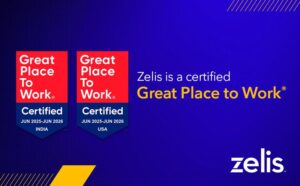
Kaitlin Howard is a researcher and writer producing insightful content across the healthcare revenue cycle. She has written and produced content for Zelis, Waystar, and Recondo Technology, as well as agencies. With a B.A. in English and Writing from University of Denver, Kaitlin stays current on market updates on claims management and healthcare payments, publishing a regular educational blog series on industry trends and Zelis offerings.
$4.1T (or $12,530 per person) was spent in the United States on healthcare in 2020. That’s a 9.7% increase from 2019.
The National Heath Care Anti-Fraud Association estimates that health care fraud costs the nation about $68 billion annually.
Your primary goal as a healthcare payer should be to ensure provider claims are processed efficiently and paid accurately. Effective payment integrity ensures this. A streamlined payment process reduces friction between payers and providers, bringing both stability and predictability to reimbursement.
And the good thing is, you have options.
Payers can elevate their payment integrity strategy to do much more than fraud, waste, and abuse prevention.
“The real goal of payment integrity is to free up money for improvements that impact patient care.” — Dr. Timothy Garrett, MD, Zelis Chief Medical Officer, CCS
The approach
Payment integrity approaches can vary widely among insurers, and the success (or failure) of these programs can significantly impact operational capabilities and cost. Luckily, payers can facilitate greater efficiency in their payment integrity efforts by choosing a single strategic partner and leveraging a single data stream.
In a best-of-breed model, payers look to adopt a solution from an industry leader for each part of the healthcare claims review and payment process.
While this may seem like a viable option (who wouldn’t want the best of all worlds), oftentimes, what’s forgotten with these types of approaches is cost. And by that we mean both the financial cost and the cost in terms of effectiveness. Think: staff hours required to manage non-integrated systems.
Alternatively, choosing a single vendor approach enables a streamlined one-stop shop. For payers interested in benefits design and care management this is a particularly attractive option.
The why
“A single vendor approach is often the best choice because it allows a payer’s internal teams to direct their focus to strategic areas. Of course, some payers, especially large organizations, may have more needs than a single vendor can supply. Even still, minimizing the number of vendors is of tremendous value in streamlining operations.” — Dr. Timothy Garrett, MD, Zelis Chief Medical Officer, CCS
Healthcare is complex. We get it. But your workflow shouldn’t be.
A multitude of technologies creates the illusion of choice, but one of the key issues with these bolt-on technologies is that they are often not integrated with one another. Meaning: you now have gaps along your claims review and payments processes that can hinder critical information flow.
Staff are then responsible for processing bits and pieces of non-standardized data in an accurate and timely manner. And, let’s be honest, there’s just not enough time in a day.
A single vendor approach allows you to access correct content within your current workflows, enabling staff to get to the right work faster. Choosing the single vendor approach also allows you to have a go-to person within said vendor to help simplify troubleshooting and answer questions in real-time.
Another, perhaps not so obvious, benefit of the single vendor approach comes in the form of a more streamlined implementation.
The choice
It all boils down to asking questions.
Evaluate your potential vendors based on their ability to serve as a partner, not just the potential of their solution.
“Payers should ensure that the vendor is updating their content regularly and remaining in tune with the payer’s needs. All of that is based on open, honest, and transparent communication between the two.” — Dr. Timothy Garrett, MD, Zelis Chief Medical Officer, CCS
But partnership should also extend to resource utilization.
A good vendor can help you identify areas of strength within your organization. This allows you to optimize your outsourcing. Sometimes it’s more cost-effective to keep things internal, but you may not be getting the results you want. Your vendor should help you close those gaps.
Another key question focuses on vendor operations.
If your vendor is nationwide, they have the ability to not only identify solutions for a specific payer but also across the board. Hello, network effect.
Here’s some context in case you’re not familiar:
In economics, “network effect” refers to the value a user (aka you) derives from a solution depending on the number of others (aka other payers) using the same solution.
In other words, you gain more value the more other organizations use the same solution.
The wrap up
It’s time to streamline, balance, and clarify your payment processes.
You might lack the right payment integrity infrastructure, or your resource utilization might be lacking. Regardless, you need a partner whose goal is not only to build stronger connections between you, your providers, and your members but also to create the technology and processes ensuring that goal.
For more information on payment integrity, read our recent article on Health Payer Intelligence.
To learn how Zelis harnesses data-driven insights and human expertise to optimize every step of the payment cycle, connect with us.




